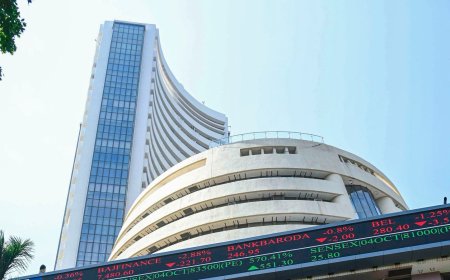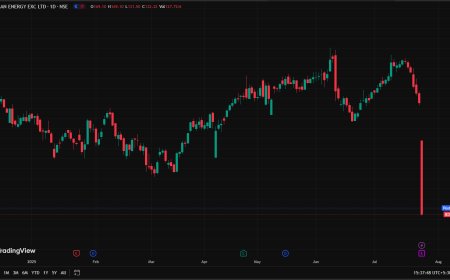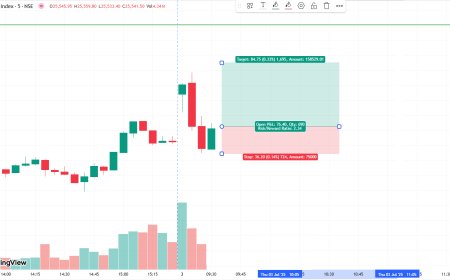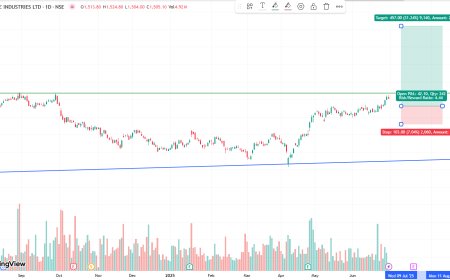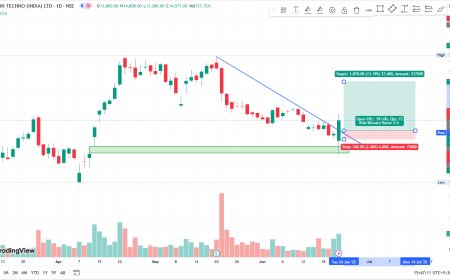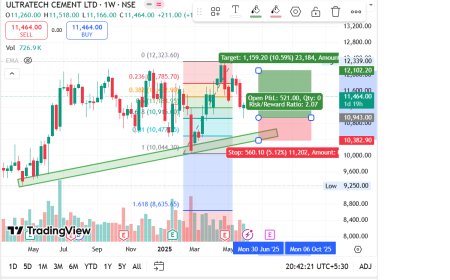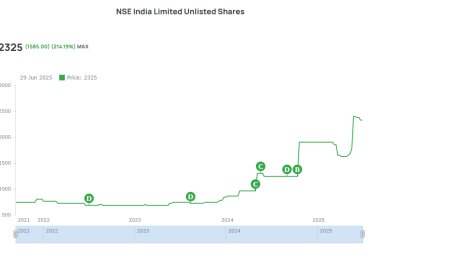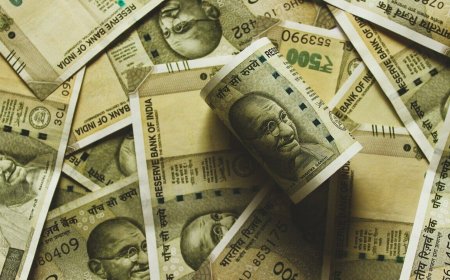Rupee Rally: Indian Rupee Hits ₹83.83 Against USD on Foreign Inflows and US Trade Deal Hopes
The Indian rupee surged nearly 2% to ₹83.83 per USD this week, driven by strong foreign equity inflows and rising optimism about a potential India-US trade deal. Here’s what’s fueling the rally and what it means for markets.
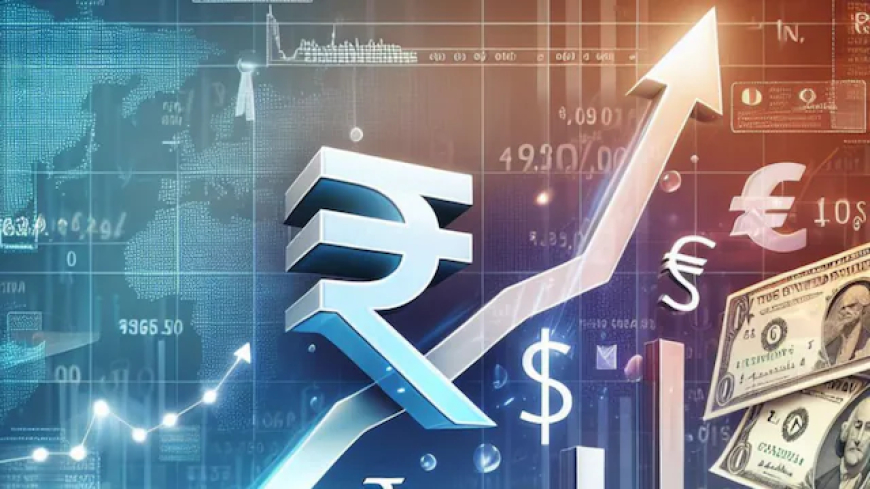
Rupee Rally: Indian Rupee Surges to ₹83.83 Against the USD Amid Strong Foreign Inflows and Trade Optimism
Date: May 2, 2025
By: ASJ News Desk
In a significant move that caught the attention of traders and economists alike, the Indian rupee rallied strongly this week, appreciating by nearly 2% to settle at ₹83.83 per U.S. dollar. This surge marks one of the most notable weekly gains for the rupee in recent months, fueled by a combination of strong foreign equity inflows, easing global uncertainties, and renewed optimism over an impending India-U.S. trade deal.
According to data released by Reuters, the rupee’s upward momentum is expected to continue if the macroeconomic indicators remain supportive and the U.S. maintains its current monetary trajectory.
What Triggered the Rupee’s Rally This Week?
There were multiple catalysts behind this sharp rally in the rupee, and understanding each is crucial to grasp the bigger picture:
1. Foreign Equity Inflows Surge
One of the strongest tailwinds for the rupee has been the consistent buying by foreign institutional investors (FIIs) in Indian equities. Over the past week alone, net foreign inflows exceeded $2.5 billion, reflecting strong confidence in India’s growth story and corporate earnings.
Indian equity indices—particularly the Nifty 50 and Sensex—hit fresh all-time highs, prompting further inflows from global funds. These inflows not only provide a boost to the stock market but also directly support the rupee by increasing dollar supply in the forex market.
"Investors are rotating funds from developed markets into high-growth emerging markets like India, especially ahead of the U.S. Federal Reserve’s expected pause in rate hikes," said Radhika Jaiswal, a Mumbai-based currency strategist.
🇺🇸 2. Optimism Over a New India-US Trade Deal
Market participants were further buoyed by reports that India and the United States are in advanced stages of negotiating a bilateral trade agreement, which could include tariff reductions, technology cooperation, and a liberalized service sector framework.
Although formal announcements are pending, early leaks indicate a positive tilt in negotiations, particularly concerning IT services, pharmaceutical exports, and agricultural imports.
Such an agreement could significantly bolster India's export profile and encourage longer-term dollar inflows through trade and investment, thus providing fundamental support to the rupee.
3. Stabilizing Crude Oil Prices
With Brent crude oil prices stabilizing below $85 per barrel, India’s import bill is expected to reduce, alleviating pressure on the current account deficit. Since India is a net oil importer, any reduction in oil prices improves trade balance and limits the outflow of foreign exchange reserves.
This factor indirectly enhances the rupee’s value by improving India's macro fundamentals and reducing the strain on the balance of payments.
Rupee Performance vs Other Currencies
When compared to other emerging market currencies, the rupee has outperformed this week. While the Chinese yuan, Thai baht, and South Korean won posted marginal losses or remained flat, the INR emerged as one of the best-performing currencies in the Asia-Pacific region.
| Currency | Weekly Change (%) | Direction |
|---|---|---|
| Indian Rupee (INR) | +1.92% | ✅ Up |
| Chinese Yuan (CNY) | -0.20% | ❌ Down |
| Thai Baht (THB) | +0.35% | ✅ Slight Up |
| Korean Won (KRW) | -0.12% | ❌ Down |
This shows increased investor confidence in the Indian economy, driven by both domestic strength and positive geopolitical tailwinds.
RBI’s Stance and Intervention Policy
While the Reserve Bank of India (RBI) has maintained a generally hands-off approach, traders believe that the central bank might have sold dollars earlier in the month to cap rupee volatility. However, with appreciation pressures building, the RBI is expected to absorb excess dollar flows to prevent the rupee from becoming too strong too quickly, which could hurt export competitiveness.
According to forex dealers, the RBI could step in to replenish forex reserves, which currently stand at $645 billion, providing ample buffer for currency management.
Impact on Different Sectors of the Economy
1. Importers and Consumers
A stronger rupee is good news for importers, especially those dealing in oil, electronics, and raw materials. It makes imports cheaper, which can lower input costs and eventually bring down prices for end consumers.
2. Overseas Travel and Education
For students studying abroad and Indians planning international travel, this is a welcome relief. A stronger rupee means lower costs in foreign currencies, making tuition fees, accommodation, and air tickets more affordable.
3. Exporters
On the flip side, a rising rupee could hurt exporters, especially in sectors like textiles, auto components, and agri-exports. A stronger currency makes Indian goods more expensive overseas, potentially denting price competitiveness.
However, exporters dealing in high-value goods and services may see limited impact, particularly IT firms who often hedge their exposure well in advance.
Expert Opinions: Is the Rally Sustainable?
Market Analysts Speak
Most currency strategists are cautiously optimistic. The rally has strong fundamentals backing it, but global macro risks like U.S. inflation data, Fed rate actions, and geopolitical developments still pose uncertainties.
"The rupee’s current rally is justified, but it’s essential to see whether the optimism around the U.S. trade deal materializes into a formal agreement," noted Rohit Shah, Head of Research at CapitalFox Global.
Outlook for May 2025 and Beyond
Looking ahead, the rupee’s direction will be dictated by the following key factors:
-
Progress in India-U.S. trade talks
-
U.S. interest rate trajectory
-
Global risk sentiment and FII flows
-
RBI’s intervention strategy
-
Crude oil and commodity price stability
If all things remain constant, the rupee could appreciate further toward ₹83.50/$, although the RBI is likely to prevent excessive appreciation by dollar-buying interventions.
Conclusion: Rupee's Resilience Reflects India’s Rising Economic Clout
The rupee's nearly 2% weekly gain and closing level of ₹83.83 per USD signal a strong, resilient Indian economy that’s attracting foreign capital amid global uncertainty. With healthy macroeconomic indicators, growing foreign interest, and optimism around strategic trade alliances, the Indian currency may be entering a new phase of strength.
While exporters and the RBI will tread carefully, the current trajectory offers both economic confidence and currency credibility on the global stage. As India strengthens its diplomatic and trade footprint, the rupee could emerge as a more stable and globally relevant currency in the years ahead.
FAQs
Q1. Why did the rupee appreciate this week?
Due to strong foreign equity inflows, optimism around an India-US trade deal, and stable oil prices.
Q2. What is the new exchange rate for INR to USD?
As of May 2, 2025, the Indian rupee stands at ₹83.83 per U.S. dollar.
Q3. Will the RBI intervene to stop further rupee appreciation?
Possibly. The RBI may buy dollars to curb excessive rupee strength and protect export competitiveness.
Q4. Who benefits from a strong rupee?
Importers, students abroad, and international travelers benefit due to reduced costs in foreign currencies.
Q5. Who loses from a strong rupee?
Exporters and companies relying heavily on overseas sales may face pricing disadvantages.
What's Your Reaction?
 Like
0
Like
0
 Dislike
0
Dislike
0
 Love
0
Love
0
 Funny
0
Funny
0
 Angry
0
Angry
0
 Sad
0
Sad
0
 Wow
0
Wow
0




